 Production of the Volkswagen ID 4 electric crossover has begun at the firm’s Zwickau factory in Germany ahead of its official launch late next month.
Production of the Volkswagen ID 4 electric crossover has begun at the firm’s Zwickau factory in Germany ahead of its official launch late next month.
The ID 4 will initially be offered in rear-wheel-drive with a range of up to 500 kilometres. VW says production of the machine began on time, despite the disruption caused by the coronavirus. Thomas Ulbrich, Volkswagen’s board member for e-mobility, said: “Given the major societal challenges of recent months, the successful start of ID 4 series production is an exceptional achievement.”
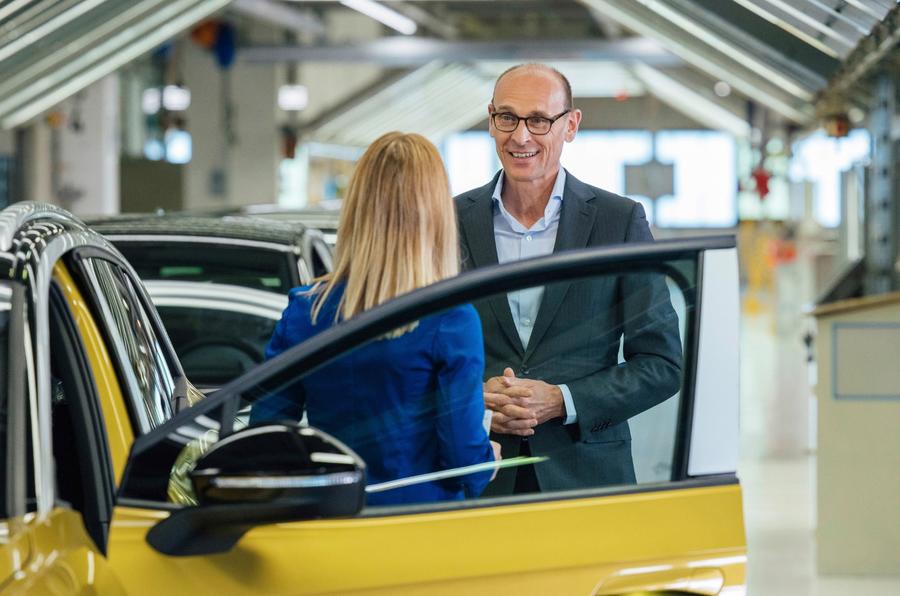 The Zwickau factory was previously home to the Volkswagen Passat, and the firm has spent €1.2 billion (AUD$2.02 billion) converting it to house an MEB production line with an initial capacity of around 300,000 vehicles. Pre-production of the ID 4 has also begun at VW’s Anting, China plant, with production due to begin at Cattanooga, Tennessee, in 2022.
The Zwickau factory was previously home to the Volkswagen Passat, and the firm has spent €1.2 billion (AUD$2.02 billion) converting it to house an MEB production line with an initial capacity of around 300,000 vehicles. Pre-production of the ID 4 has also begun at VW’s Anting, China plant, with production due to begin at Cattanooga, Tennessee, in 2022.
While Volkswagen has yet to officially reveal the ID 4, it has previously been seen undisguised in images filed with the Chinese government.
The images were contained in VW filings to China’s Ministry of Industry and Information Technology (MIIT), and are are part of documents all firms must submit to gain type approval for models in China.
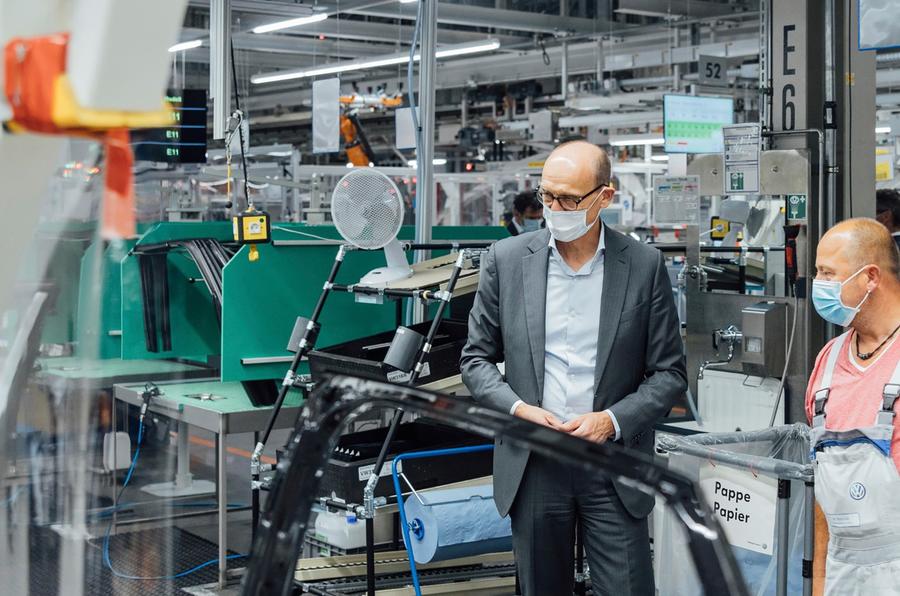 The images show how the ID 4 will look in its production bodywork and confirm that, as expected, it will share similar design features and traits to the ID 3 hatch. The documents also confirm that the machine will be 4592mm long, 1852mm wide and 1629mm high, with a wheelbase of 2765mm. Initially, the Chinese model will feature the 150kW powertrain.
The images show how the ID 4 will look in its production bodywork and confirm that, as expected, it will share similar design features and traits to the ID 3 hatch. The documents also confirm that the machine will be 4592mm long, 1852mm wide and 1629mm high, with a wheelbase of 2765mm. Initially, the Chinese model will feature the 150kW powertrain.
The electric powered crossover will be a key part of the firm’s electric line-up, joining the ID 3 hatch, when it does on sale in Europe, China and the US in 2021.
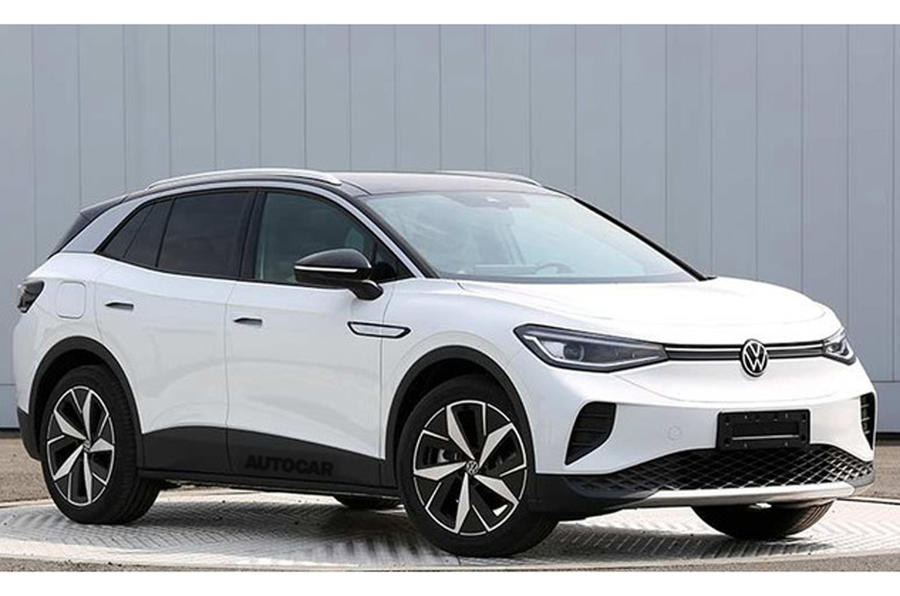 VW showed the revised camouflage livery for the machine during a webcast in place of a planned press event at the cancelled Geneva motor show. The new scheme is a two-tone blue version of the lurid pre-launch wrap used for the ID 3, and clearly shows many of the styling details of the production model. The webcast was also the first time VW had officially confirmed the model would carry the ID 4 nameplate.
VW showed the revised camouflage livery for the machine during a webcast in place of a planned press event at the cancelled Geneva motor show. The new scheme is a two-tone blue version of the lurid pre-launch wrap used for the ID 3, and clearly shows many of the styling details of the production model. The webcast was also the first time VW had officially confirmed the model would carry the ID 4 nameplate.
The ID 4 was due to be launched at this year’s New York motor show, but after that show was postponed due to the coronavirus crisis, it is expected to take place in the next few months.
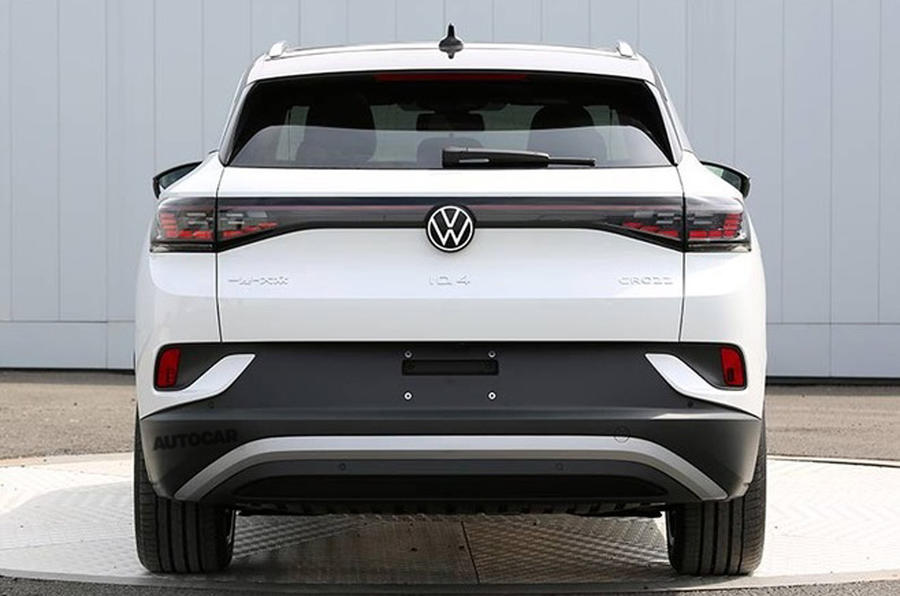 The ID 4 will initially be sold with a single electric motor and rear-wheel drive, with a more powerful twin-motor four-wheel drive layout set to be offered within the first 12 months of sales, according to Volkswagen chief operating officer Ralf Brandstätter.
The ID 4 will initially be sold with a single electric motor and rear-wheel drive, with a more powerful twin-motor four-wheel drive layout set to be offered within the first 12 months of sales, according to Volkswagen chief operating officer Ralf Brandstätter.
As suggested by the ID Crozz concept that the ID 4 is based on, the rear-wheel-drive model is expected to offer up to 150kW and 310Nm from its rear-mounted electric motor. The four-wheel-drive model will add a front-mounted motor with an additional 75kW and 140kW, taking its overall output to 225kW and 450Nm.
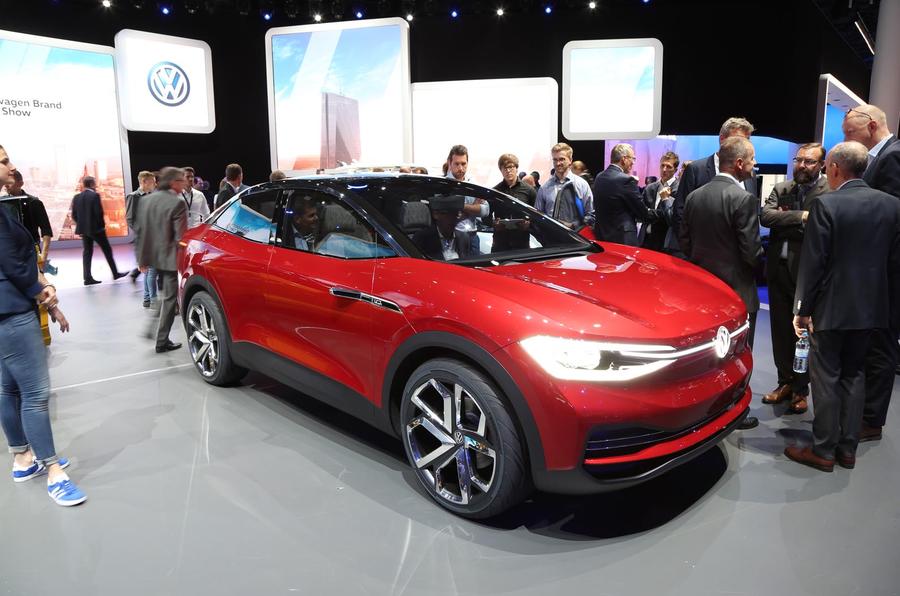 The ID 4 will offered with a range of different battery options, the largest of which, a rumoured 83kWh unit, will offer a range of up to 500 kilometres.
The ID 4 will offered with a range of different battery options, the largest of which, a rumoured 83kWh unit, will offer a range of up to 500 kilometres.
Similar in size to the Volkswagen Tiguan, the ID 4 will also offer fast-charging that will allow its battery to be charged to an 80% state of charge within 30mins on a 125-150kW system.
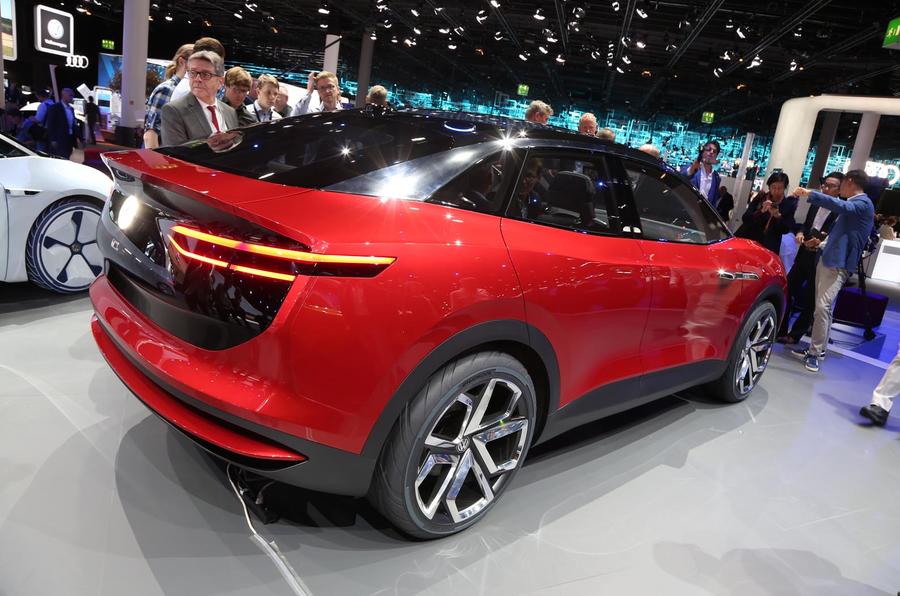 Production of the ID. 4 is planned to take place in factories in Germany, China and USA, cementing its status as a global model, unlike the ID. 3 which is not planned to be sold in the USA.
Production of the ID. 4 is planned to take place in factories in Germany, China and USA, cementing its status as a global model, unlike the ID. 3 which is not planned to be sold in the USA.
There will be two versions of the ID SUV: a standard model and a coupe-SUV in the vein of the original concept, expected to be named the ID 4 and ID 5 respectively. The ID 5 will be revealed at a later date.
The ID 4 SUV will have a more conventional roofline and tailgate design, and is also expected to have conventional rear doors, ditching the sliding ones on the 2017 Crozz concept.
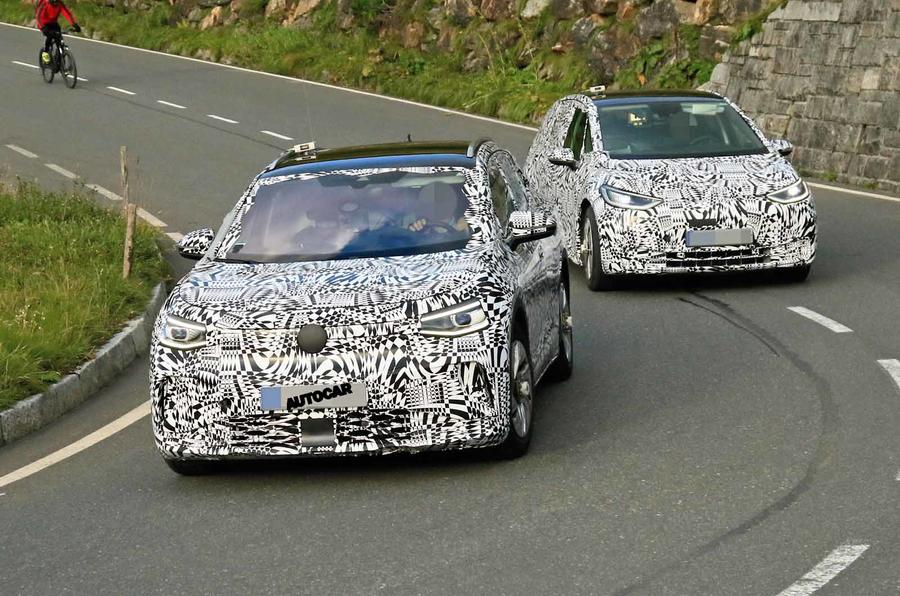 We’ve previously seen prototypes of the model testing, which confirm that it shares a similar profile as the Crozz concept, including the rising and falling shoulderline, imposing front-end and high haunches. An ID 4 prototype in a different camouflage livery was also shown at last September’s Frankfurt motor show during the launch of the ID 3, with which it will share many design cues.
We’ve previously seen prototypes of the model testing, which confirm that it shares a similar profile as the Crozz concept, including the rising and falling shoulderline, imposing front-end and high haunches. An ID 4 prototype in a different camouflage livery was also shown at last September’s Frankfurt motor show during the launch of the ID 3, with which it will share many design cues.
The ID 4 and ID 5 will be built in Europe, the US and China, cementing its status as a truly global model and a crucial kingpin of the brand’s rapid EV rollout.
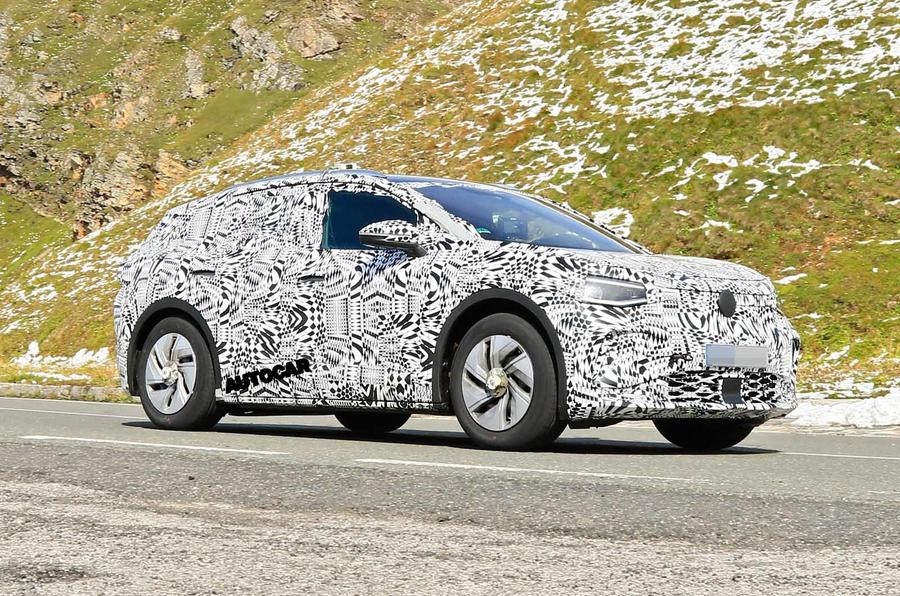 “As early as 2020, we aim to sell 100,000 all-electric Volkswagens [per year],” said VW Group chairman Herbert Diess at the Crozz concept’s 2017 unveiling. “But this is just the beginning. By 2025, annual sales could increase tenfold to one million vehicles.”
“As early as 2020, we aim to sell 100,000 all-electric Volkswagens [per year],” said VW Group chairman Herbert Diess at the Crozz concept’s 2017 unveiling. “But this is just the beginning. By 2025, annual sales could increase tenfold to one million vehicles.”
The ID 4 and ID 5 aims to combine the dynamic lines of a modern-day sports car with the all-terrain capability of a dedicated off-roader. It’s said to offer interior space on a par with the Tiguan Allspace, a long-wheelbase version of VW’s best-selling SUV model.
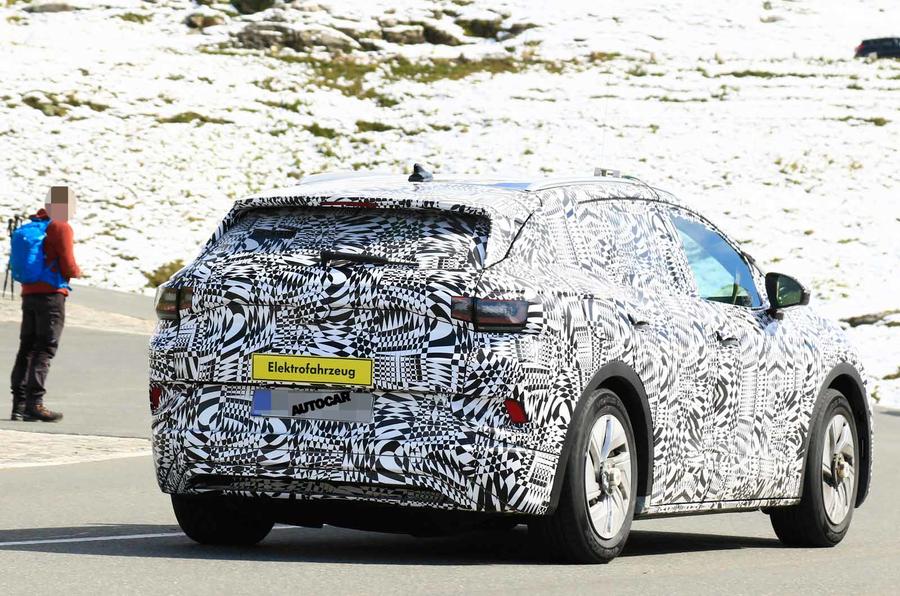 The ID Crozz concept is 4625mm long, 1891mm wide and 1609mm tall, putting it in between the five-seat Tiguan and seven-seat Tiguan Allspace in terms of dimensions. The wheelbase is 2773mm.
The ID Crozz concept is 4625mm long, 1891mm wide and 1609mm tall, putting it in between the five-seat Tiguan and seven-seat Tiguan Allspace in terms of dimensions. The wheelbase is 2773mm.
The MEB-based ID Crozz features two electric motors – one mounted within the front axle, and one at the rear – powered by an 83kWh lithium ion battery housed within the floor structure. The front electric motor sends its 75kW and 140Nm to the front wheels. The rear unit delivers 150kW and 310Nm to the rear wheels, giving the car a combined output of 225kW and 450Nm.
This is just under 100bhp more than the powertrain used by the rear-wheel-drive ID hatchback, intended to offset a likely weight increase. The ID 4 is set to have a range of more than 500 kilometres, with no specific figure yet quoted. No performance figures have been revealed, though VW says it intends limiting the top speed to 200km/h.
With the car’s large battery mounted low down within the floor structure and the electric motors also housed within the axle assemblies front and rear, VW also claims it possesses a front-to-rear weight distribution of 48:52. VW officials have talked up the dynamic qualities, suggesting the new platform and chassis provide a “large spread between handling and comfort”.
Greg Kable




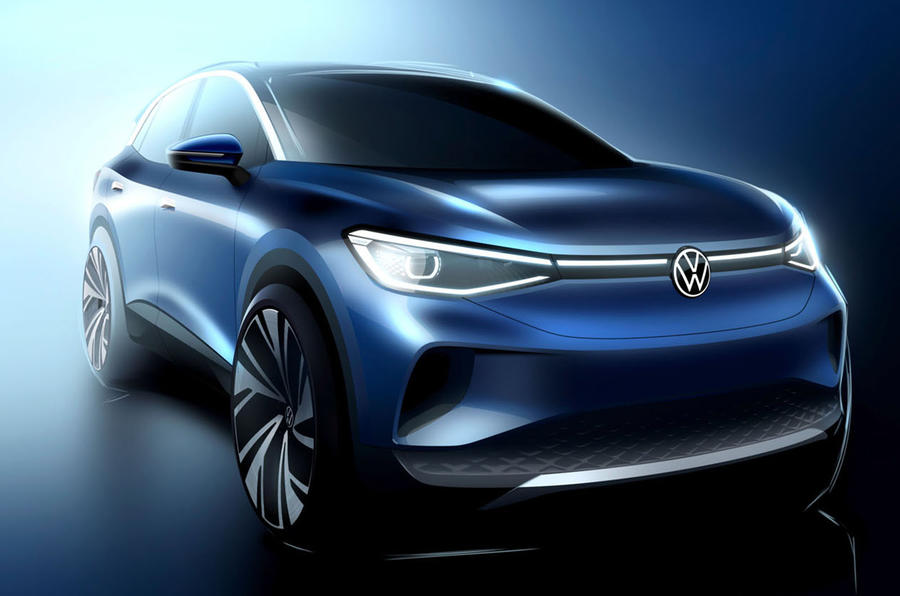 Production of the Volkswagen ID 4 electric crossover has begun at the firm’s Zwickau factory in Germany ahead of its official launch late next month.
Production of the Volkswagen ID 4 electric crossover has begun at the firm’s Zwickau factory in Germany ahead of its official launch late next month.